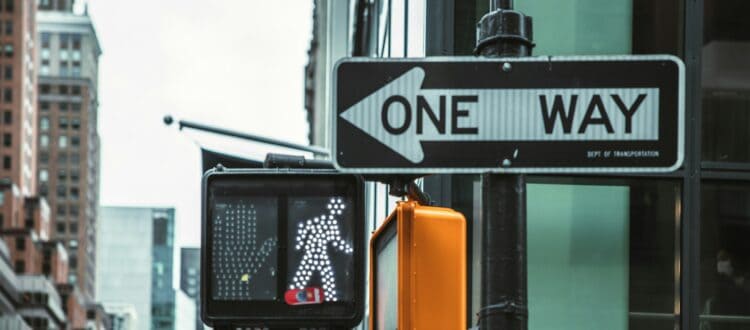Traffic control signs are an essential aspect of road management, providing crucial information for drivers, pedestrians, and other road users. These signs serve to regulate traffic flow, communicate important warnings, and guide individuals safely through various road conditions.
From stop signs and speed limit indicators to construction zone warnings and pedestrian crossings, these signs play a vital role in ensuring the safety and efficiency of our roadways. Understanding the significance of these signs and their specific meanings is paramount for all road users, as they are designed to minimize accidents and promote a harmonious interaction between vehicles and pedestrians.
The Importance of Traffic Control Signs
1. Regulating Traffic Flow: Traffic control signs play a crucial role in regulating the speed and movement of traffic, ensuring a smooth and safe flow of vehicles on the road.
 2. Providing Essential Information: These signs offer necessary information about the road ahead, including speed limits, directions, and potential hazards, contributing to the overall safety of road users.
2. Providing Essential Information: These signs offer necessary information about the road ahead, including speed limits, directions, and potential hazards, contributing to the overall safety of road users.
3. Preventing Accidents: By conveying warnings and instructions, they help prevent potential risks and accidents, thereby enhancing road safety.
4. Overcoming Language Barriers: The use of symbols on traffic signs facilitates instant communication with roadway users, overcoming language barriers and ensuring universal understanding.
5. Efficient Traffic Management: They aid in the efficient management of traffic, helping to avoid congestion and maintain a smooth flow of vehicles.
What Materials are Traffic Control Signs Made?
1. Aluminum: They are commonly made of 5052-H38 sheet aluminum in .063, .080 and less commonly .010 and .125 gauges, pre-treated in accordance with ASTM standards. The surface of the sheet aluminum is cleaned, deoxidized, and coated with a light and tightly adherent chromate conversion coating free of powdery residue.
2. Reflective Sheeting: Reflective sheeting is used to create reflective road signs, providing high visibility, especially at night. Diamond grade reflective signs, in particular, offer the highest visibility and are used in critical areas, including interstate highways.
3. Retroreflective Materials: They are made with retroreflective materials that reflect light from headlights back towards the driver’s eyes, achieving maximum visibility, especially at night.
4. Steel: Some traffic signs, particularly those used in high-impact areas, may be made from steel to provide exceptional durability and resistance to damage.
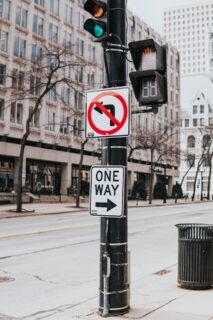 5. Composite Materials: Composite materials, such as fiberglass, are utilized in the production of some traffic signs due to their lightweight properties, durability, and resistance to corrosion.
5. Composite Materials: Composite materials, such as fiberglass, are utilized in the production of some traffic signs due to their lightweight properties, durability, and resistance to corrosion.
6. Acrylic and Polycarbonate: These materials may sometimes be used for certain types of lighted traffic signs, offering excellent optical clarity, impact resistance, and weatherability.
7. Wood: In some cases, wooden posts and frames are used for mounting traffic control signs, providing a traditional and aesthetically pleasing option, especially in rural or historic areas.
8. Vinyl: Vinyl (PVC) is used for some types of temporary or portable traffic control signs due to its flexibility, ease of use, and ability to withstand outdoor conditions.
9. LEDs (Light Emitting Diodes): In modern traffic control signs, LED technology is integrated to provide illuminated signs for enhanced visibility, especially in low-light conditions or during nighttime.
10. Corrugated Plastic: Corrugated plastic, such as polypropylene, is used to create temporary or semi-permanent traffic control signs due to its lightweight nature, durability, weather resistance, and low cost.
11. High-Intensity Prismatic (HIP) Sheeting: This type of reflective sheeting is used for (usually) aluminum traffic signs to provide high visibility during both day and night, enhancing safety for road users.
12. Anti-Graffiti Coatings: Some traffic control signs are coated with anti-graffiti materials to make it easier to remove any unwanted markings or vandalism, ensuring the signs remain clear and legible.
Where Should Traffic Control Signs be Placed?
They should be strategically placed at key locations to effectively convey important information to road users. These locations include intersections, where stop signs, yield signs, and direction indicators are crucial for guiding traffic and preventing accidents. Also, signs indicating speed limits, pedestrian crossings, and school zones should be positioned at appropriate distances to ensure drivers have ample time to react. On highways, signs indicating exit ramps, lane merging, and upcoming hazards need to be positioned well in advance to provide drivers with sufficient warning.
Placing traffic control signs in highly visible areas, free from obstruction, and at a height that allows for clear visibility from a distance is essential to ensure their effectiveness in guiding and informing road users. Also, signs should be positioned in accordance with local regulations and best practices for traffic control and safety.
What are the Different Types of Traffic Control Signs?
1. Regulatory Signs: These signs inform road users of traffic laws and regulations, such as speed limits, stop signs, yield signs, and no entry signs. They are crucial for maintaining order and safety on the roads.
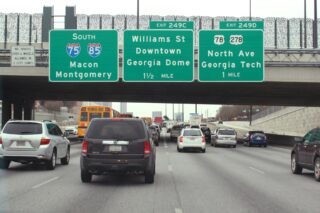 2. Warning Signs: Warning signs are designed to alert drivers to potential hazards or changes in road conditions, such as sharp curves, pedestrian crossings, animal crossings, and slippery roadways. These signs help drivers anticipate and react to potential dangers.
2. Warning Signs: Warning signs are designed to alert drivers to potential hazards or changes in road conditions, such as sharp curves, pedestrian crossings, animal crossings, and slippery roadways. These signs help drivers anticipate and react to potential dangers.
3. Guide Signs: Guide signs provide drivers with information about directions, distances to specific locations, and nearby transportation services. They are essential for helping drivers navigate and reach their destinations safely.
4. Information Signs: Information signs convey non-regulatory information to road users, such as service facilities, points of interest, and other relevant information. These signs are valuable for providing additional information to drivers without imposing specific regulations.
These different types of traffic control signs play a crucial role in communicating with road users, ensuring safety, and facilitating efficient traffic flow.
What are the Traffic Control Sign Colors and their Meanings?
1. Red: The color red is used for signs that instruct motorists to stop or yield. It indicates the need to come to a complete stop, such as at stop signs, yield signs, and other situations where stopping is necessary for safety.
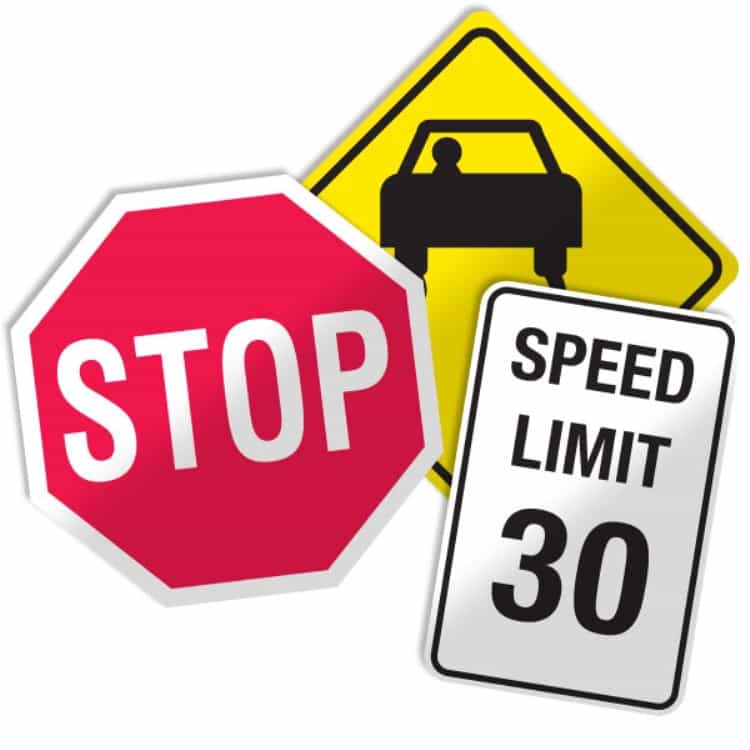 2. Green: Green signs provide highway directions and guide drivers through highway interchanges. They also indicate distances to specific locations, helping drivers navigate effectively.
2. Green: Green signs provide highway directions and guide drivers through highway interchanges. They also indicate distances to specific locations, helping drivers navigate effectively.
3. Yellow: Yellow signs serve as general warnings or cautions, alerting drivers to potential hazards or changes in road conditions. They are used to convey the need for caution and heightened awareness.
4. White: Most white road signs denote speed limits, turn lanes, one-way roads, and other regulatory information. They also provide information about U-turn permissions and other specific regulations.
5. Orange: Orange signs are used to indicate unplanned incidents or hazards ahead, preparing drivers for unexpected situations on the road, mainly construction zones.
Understanding the meanings associated with different traffic control sign colors is essential for drivers to interpret and respond to the information conveyed by these signs effectively.
How are Traffic Control Signs Regulated?
Traffic control signs in the United States are regulated and standardized by the Federal Highway Administration (FHWA), which falls under the jurisdiction of the Department of Transportation (DOT). The Manual on Uniform Traffic Control Devices (MUTCD) serves as the national standard for all traffic control devices, including signs, signals, and pavement markings. The MUTCD provides guidelines for the design, placement, and usage of traffic control signs to ensure consistency and effectiveness across the country. State and local transportation agencies are required to adhere to the MUTCD standards, ensuring that traffic control signs are uniform and easily recognizable by drivers regardless of their location within the United States.
The regulation of traffic control signs also involves the establishment of specific sign designs, colors, and symbols to convey consistent messages to drivers. The MUTCD outlines the standard shapes and colors for various types of signs, such as regulatory, warning, and guide signs, to ensure that their meanings remain consistent and universally understood. Additionally, the MUTCD provides guidelines for the placement and mounting heights of signs, ensuring optimal visibility and legibility for drivers under different road and weather conditions. These regulations are crucial for promoting safety and efficient traffic flow on roadways throughout the United States.
Furthermore, the regulation of traffic control signs involves periodic updates and revisions to the MUTCD to reflect advancements in technology, changes in traffic patterns, and improved understanding of human factors in driving behavior. The FHWA regularly reviews and updates the MUTCD to incorporate the latest research findings and best practices in traffic control device design and usage. This dynamic approach to regulation ensures that traffic control signs continue to meet the evolving needs of road users and contribute to enhanced safety and efficiency on the nation’s roadways.
Factors to Consider When Buying for Sale Traffic Control Signs
1. Identify Specific Traffic Control Needs: Assess the specific traffic control requirements of the intended location, including the type of information or instruction the signs need to convey, such as regulatory, warning, or informational messages. Understanding traffic patterns, potential hazards, and the desired impact on traffic flow is crucial for selecting the most appropriate signs.
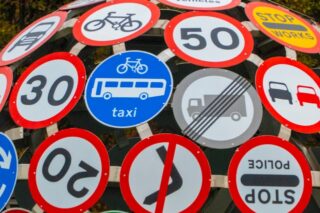 2. Ensure Visibility and Legibility: Consider the size, color, and reflective properties of the signs to ensure they are easily seen and understood by drivers, particularly in varying lighting and weather conditions. The placement of the signs should be carefully planned to maximize their visibility and impact on road users.
2. Ensure Visibility and Legibility: Consider the size, color, and reflective properties of the signs to ensure they are easily seen and understood by drivers, particularly in varying lighting and weather conditions. The placement of the signs should be carefully planned to maximize their visibility and impact on road users.
3. Verify Regulatory Compliance: Confirm that the signs being considered for purchase comply with the guidelines outlined in the Manual on Uniform Traffic Control Devices (MUTCD). Adhering to the required specifications for design, color, shape, and placement is essential to ensure the legality and effectiveness of the signs.
Conclusion
Traffic control signs play a pivotal role in maintaining order, safety, and efficiency on roadways. Their standardized design, clear messages, and strategic placement are essential for guiding and informing drivers, ultimately reducing the risk of accidents and ensuring smooth traffic flow. By adhering to regulatory standards, considering specific traffic control needs, and prioritizing visibility and legibility, the selection and deployment of traffic control signs can effectively contribute to the overall safety and functionality of the transportation infrastructure.
Popular Posts:

